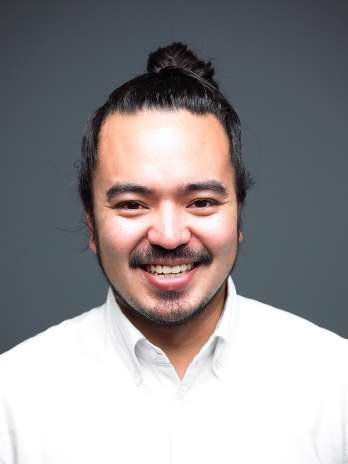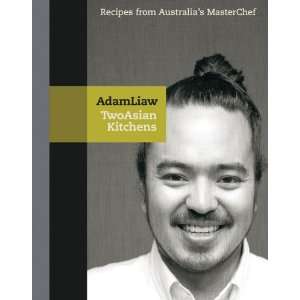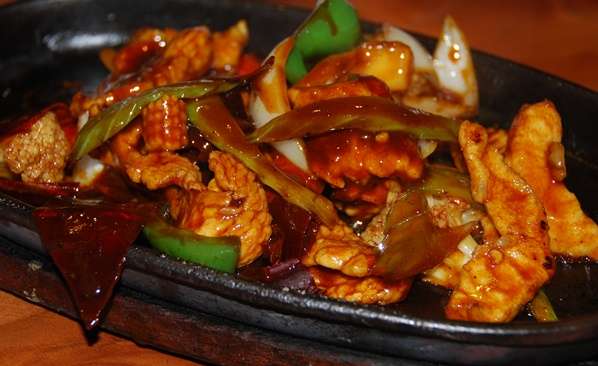Masterchef Australia Winner has a chat!
Hi there people in Travel Tart land, today I’ve got foody bent with this post – an interview with a Masterchef Australia Winner, Adam Liaw, who won the 2010 series after cooking up a storm. You can follow @adamliaw on Twitter, and check out the Adam Liaw website.
He was crazy enough to grant me a silly interview via a few questions. He’s going to open a Japanese Izakaya restaurant in Sydney sometime in 2011, which is like a pub with a casual restaurant. Anything with the word ‘pub’ in it sounds great to me!
He’s also recently released an Asian inspired cookbook titled ‘Two Asian Kitchens‘.
This interview is part of a project (er, ok, junket!) I’m doing on Malaysian Food for the Malyasia Kitchen Promotion where I basically get to pig out on a lot of great food. This kicked off at Ipoh Laksa Restaurant in Brisbane.
Here it is!
The Adam Liaw Interview
The Travel Tart: Hi Adam, thanks so much for your time. I have a lot of readers that live outside of the Australian media circus, so tell them a bit about yourself!
Adam Liaw: Well, my name is Adam Liaw and I’m an ex-lawyer who won the title of MasterChef Australia in 2010. I was born in Malaysia and grew up in Australia, but I’ve also spent a lot of time traveling and living around Asia – mainly in Malaysia, China and Japan. I’ve been lucky enough to write a cookbook called “Two Asian Kitchens”, which has become one of the best selling Asian cookbooks ever in Australia. Basically, I’m just a food lover!
The Travel Tart: So am I! I’m getting stuck into some Malaysian food at the moment, which I’m really enjoying. It seems to share many characteristics with the incredibly diverse Indonesian cuisine I’ve tried (some Indonesians I’ve talked to jokingly refer to Malaysian food as Indonesian food that’s marketed better!), so what’s your take on what Malyasian food is all about?
Adam Liaw: Malaysian food shares some similarities with Indonesian dishes, but Malaysia’s long history of Chinese and Indian migration and British colonialism has created a truly unique and diverse cuisine. I see the four main styles of Malaysian food as being Malay, Chinese Malaysian, Indian Malaysian and Peranakan. Malay food is similar in some ways to Indonesian in that we have dishes like Nasi Lemak, Beef Rendang and Satay that are very popular, but there are so many other amazing and unique Malaysian dishes like Nasi Kerabu (Herbed Rice) and the rainbow of Malaysian Kuih (cakes and sweets) that many people outside Malaysia have not had the chance to try. Malaysian Chinese food has dishes like Char Kway Teow (fried rice noodles), Hainanese Chicken Rice and Hokkien Mee. Indian Malaysian food has delicacies like Roti Canai, Murtabak and Teh Tarik. Peranakan food is a very old fusion of Chinese and Malay influences such as Ayam Kapitan, Pie Tee and Asam Laksa. Malaysian food is a very clear expression of the country’s history and culture, and there’s no better way to experience it than through your stomach.
The Travel Tart: I’ve eaten all sorts of weird stuff like Cow’s Nose in Satay Sauce (Rujak Cingur), Tea With Egg (Teh Telur), and Shaved Ice with Red Beans (Kacang Mehmet). What’s the most unusual food you have ever tasted? And it doesn’t have to taste good!
Adam Liaw: I’ve grown up with Malaysian food so none of it is really unusual to me, but to the uninitiated, some find the variety of Malaysian food a bit intimidating. Malaysia has literally dozens of types of laksa, from the creamy coconut laksa (Laksa Lemak) that many Australians are familiar with through to the fishy and sour Asam Laksa from Penang. Trying a laksa from Penang fragrant with mackerel and tamarind when they’re expecting something completely different can be quite an experience. Most people love it though.
The Travel Tart: Japanese TV is famous (or infamous) for some of the insane TV shows there. What’s the most bizarre TV show that’s graced your television screen there?
Adam Liaw: I have to say I don’t watch much TV, which I guess is strange for someone who was on TV for such a long time. I do remember a show (Gaki no Tsukai) where some guys had to play the game of Chasey in a room for 24 hours straight though.
The Travel Tart: I’ve been to Malaysia a couple of times (only around Kuala Lumpur – I’d love to see more of the country), and have seen a couple of funny food signs (for example – check out Grilled Crap! ) What’s the funniest food sign you’ve seen there?
Adam Liaw: Because of its colonial history, most Malaysians are fluent in English, which is one of the things that make it such an easy country for Australians to travel in. We don’t really get too much of those kind of misspellings in Malaysia!
The Travel Tart: You’ve travelled around a lot when growing up – something like 20 cities in 4 countries? Do you love travelling around, and where was the place you thought ‘hell yeah, I love travelling?’
Adam Liaw: Before I moved to Japan, I spent a couple of months around the islands in Malaysia. Places like Redang, Perhentian, Tioman and Lankawi, Some of those places are really paradise on earth.
The Travel Tart: Thanks for your time Adam, and happy cooking! And have fun with the Malaysia Kitchen promotion. I know I will because I’ll probably have to check myself in as excess baggage on my next flight!
More Malaysia Kitchen and Adam Liaw Stuff
Check out the official Malaysia Kitchen Website and Two Asian Kitchens. And keep an eye out for some Malaysian Food reviews as a result of me pigging out!
And also check out some other Brisbane based bloggers eating out at some Malaysian Joints: DefiNatalie, Hello Owl, Seven Cherubs and BNE Hot or Not.



Hi Anthony,
Lol at the interview. I think Adam was just being diplomatic about those crazy signs and tv shows:)
The food sounds fab and I’ve been taking notes so I know what to pig out on – I mean sample – when I visit a Malaysian restaurant. This definitely made me want to go soon.
Plus I learned something – Rendang is an island, not just a curry;)
So thanks for educating me too.
No worries. I’ll be needing to run a few marathons to work off all of the food!
Beef Rendang is from Minangkabau Culture, and Minangkabau (in English mean : Win Because The Buffalo) is from sumatera, specially Padang, Indonesia. Try more Indonesia food, such as : Sate, Semur, Ayam Rica, Ayam Betutu, Gado – Gado, Ketoprak, Nasi Goreng, Soto
sounds yummy!